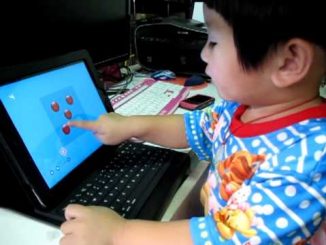
Opening Insights: Will AI Replace Us?
Artificial Intelligence is here. The question is, will it help us, or replace us? As intelligence increases in machines the line between programing and thinking begins to blur. What kind of intelligence, and to what level, are systems developers really building?
Loihi, "mimics how the brain functions by learning to operate based on various modes of feedback from the environment."
An International Business Times (IBT) article written by Immanuel Jotham shared the exciting news - that Intel created a chip able to mimic the human brain's ability to learn from the environment. In reading the article and becoming aware of current innovations, ask yourself:
- Is this new CHIP really going to be learning from our environments, our toxic and dysfunctional environments?
- Is this innovative technology really able to learn, and if so, on what cognitive, emotional and spiritual level?
- How can machines ever truly understand or relate to, the sentient human experience? Will they ever? Will they ever want to?
Informational Insights: Machine Learning
Intel is working on a chip that could learn like the human brain and be used for self-learning artificial intelligence (AI) applications.
The chip codenamed "Loihi" is based on neuromorphic computing, according to a release by the company. That means it can learn by itself from its surroundings. Loihi can also reportedly learn locally from within any machine that it is a part of.
Michael Mayberry, corporate vice president and managing director of Intel Labs, wrote in a release that Loihi, "mimics how the brain functions by learning to operate based on various modes of feedback from the environment." It makes use of data that it has collected, to learn and make inferences, he added.
By learning from experiences, Loihi can get smarter over time and does not need to be trained in the "traditional way" said Mayberry.
For example, Google's DeepMind was able to beat 49 video games, but after every victory, it had to be specifically retrained to learn each game; it could not teach itself and "forgot" what it learnt about previous games.
"The Loihi test chip offers highly flexible on-chip learning and combines training and inference on a single chip," said Mayberry in the release.
It can reduce real machine learning time by working locally instead of waiting for an update from the cloud, he wrote, claiming it is also 1,000 times more energy efficient than traditional processors.
Neuromorphic computing, says the release, is inspired by the brain and current understanding of how the mind works. Intelligent behavior comes from cooperative and competitive interactions between various regions of the brain's numerous neural networks and the environment within which it operates, says the report. By making use of a similar method, the company believes that Loihi will work towards raising the bar for AI development.
One example that Mayberry gave when discussing the potential uses of a chip like Loihi was a system that monitors heart rate. If heartbeats during different activities like jogging, eating a meal, going to bed, or working is presented to a system that makes use of neuromorphic learning, it could determine what a "normal" heartbeat for that particular person is. It could then detect abnormalities personalized to the user through constant monitoring, says the release.
The Loihi is still in the testing phase but is expected to be used in AI research with universities and institutions focused on machine learning in 2018.
Source: //www.ibtimes.co.uk/intels-new-self-learning-chip-designed-work-like-human-brain-1640839
Possibilities for Consideration: Will AI Ever Care?
When we examine the implications of this new technology, we need to explore the moral, ethical and social impact on humanity. In doing so we need to examine, explore, discuss and collaborate on many questions, for example:
- How are they going to train a CHIP to have Sentience (values, purpose, emotion, compassion, etc.)?
- How are they going to train a CHIP within the toxic and dysfunctional environments and cultures we live in today?
- How are they going to make the machines not just intellectually smart, but to ingrate all 9 Multiple Intelligences that make up the human intellect (as defined by Howard Gardner)?
The fundamental question is why are we building these machines instead of building our people? Have people given up on people? What can we do to rebuild and reignite human intelligence?
Add Your Insight: Summoning the Demon
With artificial intelligence we are summoning the demon. In all those stories where there’s the guy with the pentagram and the holy water, it’s like – yeah, he’s sure he can control the demon.
Doesn’t work out.
ELON MUSK






